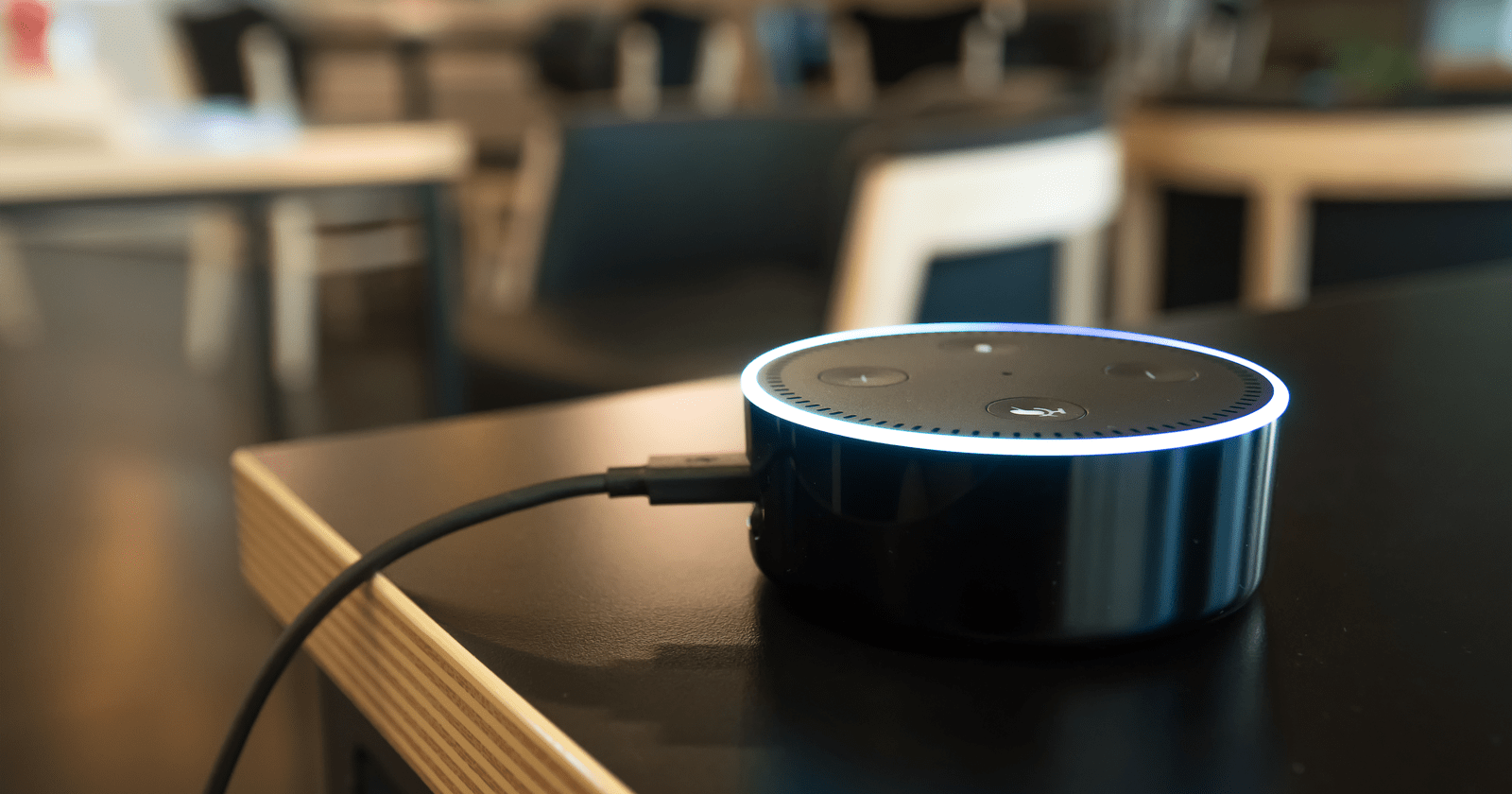Digital assistants are more popular than ever before. Almost half of Americans now use them – a testament to the technology’s growing value and place as a viable channel for commerce and customer engagement.
But what exactly is a digital assistant?
Digital assistants respond to and use voice-commands to help owners answer questions, complete simple tasks, and generally make life easier. We’ve likely all asked Siri (or similar) to place a call for us or to look up the weather forecast.
However, digital assistants’ most defining characteristics are the ones emerging right now. They’re more accurate than ever before, offer greater sophistication and capabilities, and are increasingly cost-effective at the enterprise level.
More than anything else, digital assistants are something marketers need to start caring about.
How Digital Assistants Impact Voice Search
Top brands are figuring out how to deliver their company promises with voice-activated devices, and investments in the channel will continue.
This means that more consumers will start using digital assistants to interact with brands, impacting how the average shopper requests information and learns online.
Marketers must adapt their outreach strategies to voice accordingly. For most, this means focusing early efforts on:
- Natural language SEO: Now is the time to invest in SEO that prioritizes how users want to search when speaking. For example, question words are more common when querying via a digital assistant because this is simply how real people seek out information. It’s more likely someone would ask Siri “Where is the nearest car wash?” over “Nearest car wash to me?” Brands can earn greater voice-search shares by reverse engineering their content and SEO programs around a question-and-answer format to mirror how consumers want to learn online.
- Long-tail keywords: Brands should also target long-tail keywords. As searches move from text to voice, the average length and specificity of questions will increase. For instance, a shopper may add relevant time, price, location, etc. details into a voice search that would feel cumbersome to type out. Brands willing to research long-tail keywords can take ownership over these nuanced conversations and earn new business through specific offerings and thought leadership.
Both improvements apply to any type of voice engagement and are core pillars of fruitful voice search strategies.
But, as new digital assistants emerge and older ones evolve, it’s equally important that marketers begin to tailor these core competencies to individual devices.
Digital Assistants as Marketing Channels
It’s tempting to roll out new solutions with strategies that have worked before, especially when there are financial or market pressures to move quickly.
However, marketers should think of digital assistants like social media. They’re all housed under the same umbrella and follow similar rules. But just as you wouldn’t deploy the same campaigns on both Facebook and Twitter, digital assistants deserve unique engagement plans and execution strategies.
This also means each requires its own customer-experience research and success measurements.
The Most Popular Digital Assistants
As marketers spend more time in the world of voice, it can be tough to understand what separates one digital assistant from the next.
Conceptually, these technologies have identities of their own and are branded with unique personalities (down to who does the voiceover).
But digital assistants also act as extensions of the brands that created them, and customer interactions purvey similar values and goals as if the engagements were happening via desktop or in store.
Let’s explore the four digital assistants that have dominated recent new cycles to see this principle in action.
Siri
Apple’s promise: “To make a contribution to the world by making tools for the mind that advance humankind.”
This quote came directly from Steve Jobs and captures Apple’s overall intention with each new technology it unveils.
Siri was first introduced as a pocket assistant that was easy to use and accessible to anyone (who had an iPhone).
Like a real-life assistant, Siri is continuously learning more about individual users.
She strives to incorporate personal information in ways that make life simpler over time, connecting users with the resources they need to see through tomorrow’s next big discovery.
Optimization Tips for Siri
To find success with Siri you should start strategizing common questions that can be answered about your products or industry.
You would also benefit from updating your success measurements. This could be if users can find the information they want on the first try, or how often voice searches are inspiring consumers to visit a business’ website.
Google Assistant
Google’s promise: “Organize the world’s information and make it universally accessible and useful. Since the beginning, our goal has been to develop services that significantly improve the lives of as many people as possible. Not just for some. For everyone.”
We use Google’s search engine to find quick answers with no fuss. Google Assistant is designed to make the world’s information more accessible (24/7) and digestible at the individual level.
In creating Google Assistant, Google has paved the way for more personalized search.
Optimization Tips for Google Assistant
To find success with Google Assistant you must have hawkeyes for Google algorithm updates.
You should also leverage Google’s full suite of SEO services to pinpoint unique keyword searches and queries where you can outperform competitors.
Alexa
Amazon’s promise: “To be Earth’s most customer-centric company, where customers can find and discover anything they might want to buy online… innovating new solutions to make things easier, faster, better, and more cost-effective.”
Alexa closely mirrors Amazon’s mission of making commerce as easy and enjoyable as possible.
Amazon takes its customer-centric strategies one step further with Alexa by bringing shopping right into the comfort and convenience of the living room.
Alexa is personified proof that Amazon is committed to continuously innovating and iterating its technology capabilities to improve customer experiences and remove friction from every leg of the buyer’s journey.
This mission is paying off – Alexa is today’s most used assistant. Amazon’s Echo is also quickly becoming the most dominant virtual assistant at the market.
Optimization Tips for Alexa
To find success with Alexa you should focus your voice search optimization efforts on financial information or specific commerce keywords, as well as on personalization capabilities tailored to handle repeat purchases.
Alexa is connected to Amazon’s full-suite of commerce capabilities, and users will appreciate interactions with Alexa that making purchasing easier.
Cortana
Microsoft’s promise: “You are reinventing what it means to do business, and we’re committed to finding the right solutions for you. Solutions that are disruptive but robust, delivering real results at speed.”
Microsoft’s Cortana follows similar design principles to Siri, but tailored more directly to the business world.
We live in an age “where the edges are no longer the boundaries, filled with new directions and new possibilities.”
Cortana helps enterprises make sense of those possibilities and connects them with other Microsoft solutions designed to support business growth.
It isn’t surprising smartphone owners say Cortana is the most accurate digital assistant, considering its more business-oriented, higher-stakes use cases.
Each approach plays to the unique capabilities of the digital assistant and transfers the kinds of experiences shoppers have come to expect from those brands to voice interactions.
Optimization Tips for Cortana
To find success with Cortana you should follow a similar approach to Google Assistant, but designed for Bing. This means keeping a close eye on Bing’s algorithms, as well as updates to Microsoft partners like Satori (Microsoft’s knowledge repository).
Taking a step back, you will also benefit from taking Cortana more seriously overall. While Google Assistant often overshadows Cortana (just like Google steals the spotlight from Bing), Cortana’s user engagement tripled between 2016 and 2017.
Conclusion
Considering that digital assistants are predicted to surpass 7.5 billion active devices by 2021, tips like these will help companies develop unique voice strategies and stand out.
More Voice Search Resources:
- Voice & Conversational Search: Top Challenges & How to Overcome Them
- 5 Ways Voice Search Changed in 2017 & How to Prepare for 2018
- Google Answers How to Optimize Content for Voice Search
Image Credits
Featured Image: Zapp2Photo / Shutterstock.com





